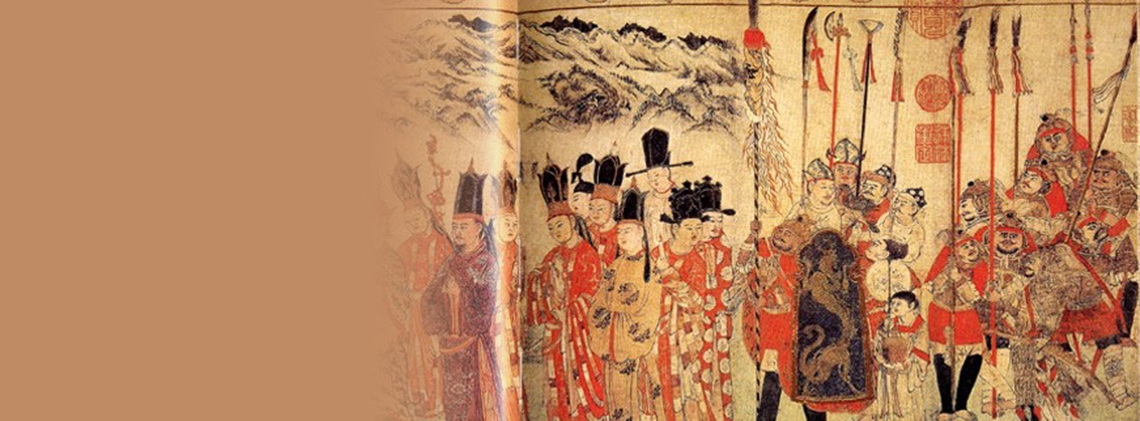
Nanzhao Culture
Splendid
Chi Culture
Topic
Nanzhao Culture
The Kingdom of Nanzhao (649–902) was founded during the Tang dynasty by the Wuman and the Baiman people as well as other ethnic groups. The regime had thirteen kings and lasted more than two-hundred years. During its heyday, the kingdom’s territory covered all of modern Yunnan, southern Sichuan, western Guizhou, and western Guangxi. The society, customs, art, and religion of the kingdom were all distinctive.
During the Sui (581–618) and Tang (618–907) dynasties, there were many ethnic tribes, known as “Zhao,” living in the area near the Erhai lake. The name Zhao refers to the language of these groups but can also mean, depending on context, “tribe” or “chieftain.” The larger tribes included the Mengsui, Yuexi, Langqiong, Tengdan, Shilang, Mengshe, Shiqiao, Shihe, Baiya, and Jianchuan. In the early Tang (early seventh century), the Mengshe tribe inhabiting the area south of the Erhai lake developed and expanded so that in 649 their chieftain, Xinuluo (617–674) established the Great Meng Kingdom with its capital at Weishan (modern Dali, Yunnan province). His great-grandson, Piluoge (697–748), with the support of the Tang dynasty, united the tribes in the Erhai lake region and established the Nanzhao Kingdom. He chose Taihe (modern Taihe village, Dali, Yunnan) as his capital. The kingdom lasted more than two hundred years until it was overthrown by the nobleman Zheng Maisi (d. 909).
Nanzhao was formed by the unification of different ethnic groups; because of this, their funeral rites, festivals, and religious rites had strong local ethnic characteristics. At the same time, the kingdom was greatly influenced by the Tang, as well as by the Tubo (Tibetan) polity which helped shape the regime’s politics. Other, more distant places such as South and South-East Asia, also contributed to the local culture. Slavery played an important role in the kingdom’s economy. Nanzhao society advocated for a standing army with a strict system of military law. By the end of the regime, the armed forces had as many as 100,000 experienced troops. Looting was often a reason for fighting neighboring tribes. Considerable numbers of enemy soldiers would be captured. Han prisoners helped to introduce the advanced culture of the Central Plain region into Nanzhao society, which aided the kingdom’s economy. Toward the end of the regime, many segments of Nanzhao society were nearly as developed as the Central Plain area.
Nanzhao art, like the rest of its culture, was rich and splendid. Their literature, while influenced by that of the Central Plain region, had certain local characteristics that can be seen in such traits as using the Bai language for its poetry. The literature, both prose and poetry, reached remarkable heights. The music and dance of the Nanzhao were indebted to various ethnic groups in Yunnan and the southeast. Representative works include “Nanzhao Music and Dance by Imperial Decree,” and “Music and Dance of the Pyu Kingdom (ancient Myanmar).” Paintings and sculptures are highly praised for their great artistic value. Representative works are the painting Nanzhao tuzhuan (Illustrated story of Nanzhao), and the statues in the Jianchuan grottoes. Other Buddhist statues and household crafts also exhibit great artistic value. Many Buddhist pagodas built during the Nanzhao regime have become an integral part of Chinese temple art.
Folk religion was common among the tribes that would eventually form the Nanzhao Kingdom. Eidolism (belief in ghosts) was especially prevalent. After the kingdom was founded, Buddhism became popular and was promoted by most of the kings. It was the primary duty of each household to worship the Buddha. Azhali Buddhism, a school of Vajrayana, more than any other sect, was practiced widely by the Nanzhao people. The Azhali monks were treated as national treasures. By the end of the regime, many Buddhist monasteries and pagodas had been built. Chan (Japanese zen) was also practiced, but mostly by noble families. Despite Buddhism’s popularity, other religions were practiced such as shamanism and Nestorian Christianity. Daoism had been practiced in Nanzhao, but it was banned during the reign of Quan Fengyou (r. 823–859), the seventh ruler of the kingdom.



